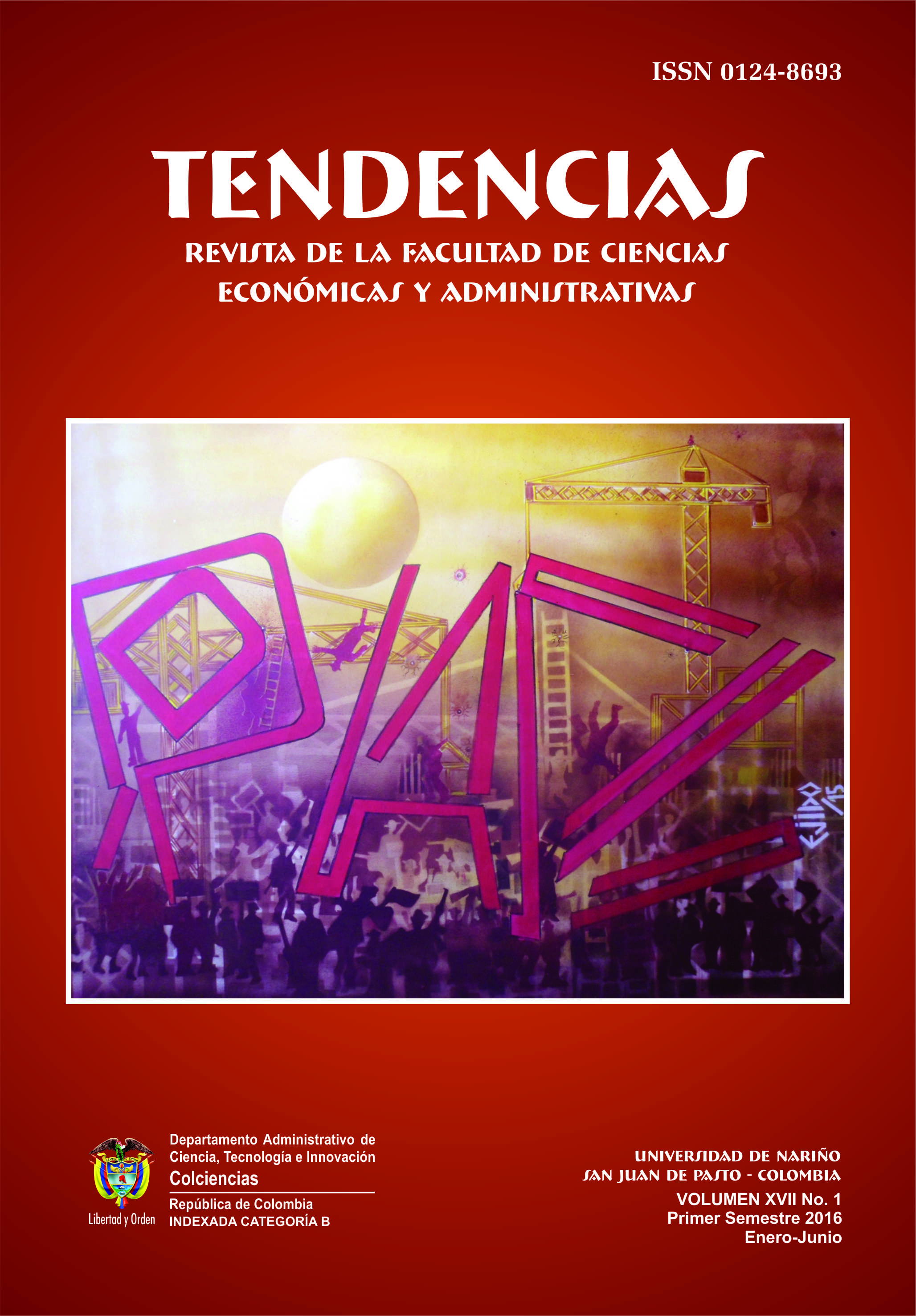Brief considerations about the importance of decision trees in portfolio analysis
DOI:
https://doi.org/10.22267/rtend.161701.11Keywords:
Financial decision trees, profitability analysis trees, Investment decisions, Investment Portfolios.Abstract
The special relationship between finance, econometrics, statistical modeling and computational simulation processes has experimented an increase in the last 50 years. The aim of this paper is to explain some considerations related to the potential application of the decision trees in financial theory and particularly as a complement in the design of traditional profitability trees. This paper suggests that the relevance attributed to profitability trees as well as portfolio modelling in financial theory, must be supplemented and secured by simulation tools which allows to anticipate future scenarios and the development of ex-ante policies. Therefore, the analysis of an investment portfolio is reinforced through profitability trees, particularly, aslant three different combinations of risk and profitability. This exercise allows to conclude that the returns of an investment portfolio related to the proposed scenarios show different results based on the Statistical probability of winning or losing.
Downloads
References
ALEXANDER, Gordon J.; SHARPE, William F y BAILEY, Jeery V. (2003). Fundamentos de Inversiones: Teoría y Práctica. Prentice-Hall, México.
BERLANGA, Vanesa, RUBIO María José y VILÀ Ruth (2013). Cómo aplicar árboles de decisión en SPSS. Revista d’Innovació i Recerca en Educació. Universitat de Barcelona. Institut de Ciències de l’Educació. Vol. 6, núm. 1, enero.
BERMEJO IGLESIAS, Antonio; TORRES PRUÑONOSA, José y ASFERRER LLAVINÉS, Núria (2009). “La utilización de los modelos ARIMA en la estimación del precio de acciones: una aplicación preliminar”. En: F.J.
COSSÍO SILVA. Administrando en entornos inciertos. Escuela Superior de Gestión Comercial y Marketing, ESIC. España.
BOLLERSLEV, T., (2001), “Financial Econometrics: Past Developments and Future Challenges,” Journal of Econometrics, Vol. 100, pp. 41-51.
CARDONA HERNÁNDEZ, Paola Andrea (2004). Aplicación de árboles de decisión en modelos de riesgo crediticio. Revista Colombiana de estadística. Volumen 27 No. 2. Diciembre.
DAMODARAN, Aswath (2014). “Uno de los mayores errores es asumir que el crecimiento de una compañía es gratis o muy barato”. Entrevista concedida a Javier García para el portal Sintetia.com el 13 de Enero de 2014. Consultada el 10 de febrero de 2015. Disponible en: http://www.sintetia.com/aswathdamodaran-stern-finance?utm_content=buffera2ae1&utm_medium=social&tm_source=twitter.com&utm_campaign=buer
ENGLE, R.F. (2001), “Financial Econometrics: A New Discipline with New Methods,” Journal of Econometrics, Vol. 100, pp. 53-56. 8. FERRO, Jorge Luis y PEÑA, Darío (2002). Juegos y Finanzas. Odeón. Borradores de investigación. Universidad Externado de Colombia, Bogotá, Diciembre. Pp. 149-160.
GUJARATI, Damodar N. y PORTER, Dawn C. (2010). Econometría. Mc Graw-Hill. México. 921p.
HANKE, John E. y WICHERN, Dean W. (2010). Pronósticos en los Negocios. Pearson. México.
HERNÁNDEZ RAMÍREZ, Enrique. “Neurofinanzas: Cuando las decisiones financieras no son racionales”. En: TEC empresarial. Vol. 4. No. 3. Costa Rica, 2010. Pp. 21-30.
MONSALVE, S. y ARÉVALO, J. (2005). Un curso de teoría de juegos clásica. Universidad Externado de Colombia.
OLAYA PARDO, Ana María (2002). Las finanzas en la frontera del conocimiento. Economía. Borradores de Investigación. Universidad del Rosario. No. 33. Bogotá, Diciembre.
ORDÓÑEZ DE PABLOS, Patricia (2000). Importancia estratégica de la medición del capital intelectual en las organizaciones. Disponible en: http://www.injef.com/revista/empresas/pop_991217.htm
RÍOS INSÚA, David; RÍOS INSÚA, Sixto; MARTÍN JIMÉNEZ, Jacinto y JIMÉNEZ MARTÍN, Antonio (2009). Simulación: Métodos y Aplicaciones. Alfaomega. México.
SMITH, Adam (1997). Investigación sobre la Naturaleza y Causas de la Riqueza de las Naciones. Fondo de Cultura Económica. México.
TARZIJÁN, J. y R. PAREDES (2012): Organización Industrial para la Estrategia Empresarial, Pearson Education-Prentice Hall, Buenos Aires.
TAUCHEN, G. (2001), “Notes on Financial Econometrics,” Journal of Econometrics, Vol. 100, pp. 57-64.
VITORIANO, Begoña (2007). Teoría de la Decisión: Decisión con Incertidumbre, Decisión Multi-criterio y Teoría de Juegos.
Published
How to Cite
Issue
Section
License
Those authors who have publications with this journal, accept the following terms:
This journal is licensed under a Creative Commons Reconocimiento-NoComercial 4.0 Internacional License. The articles can be copied, distributed, adapted and communicated publicly, as long as the credits of the work are recognized and the respective source is quoted. This work can not be used for commercial purposes.
To increase their visibility, documents are sent to databases and indexing systems.
The content of the items is the responsibility of each author, and does not compromise in any way, journal or institution.







































